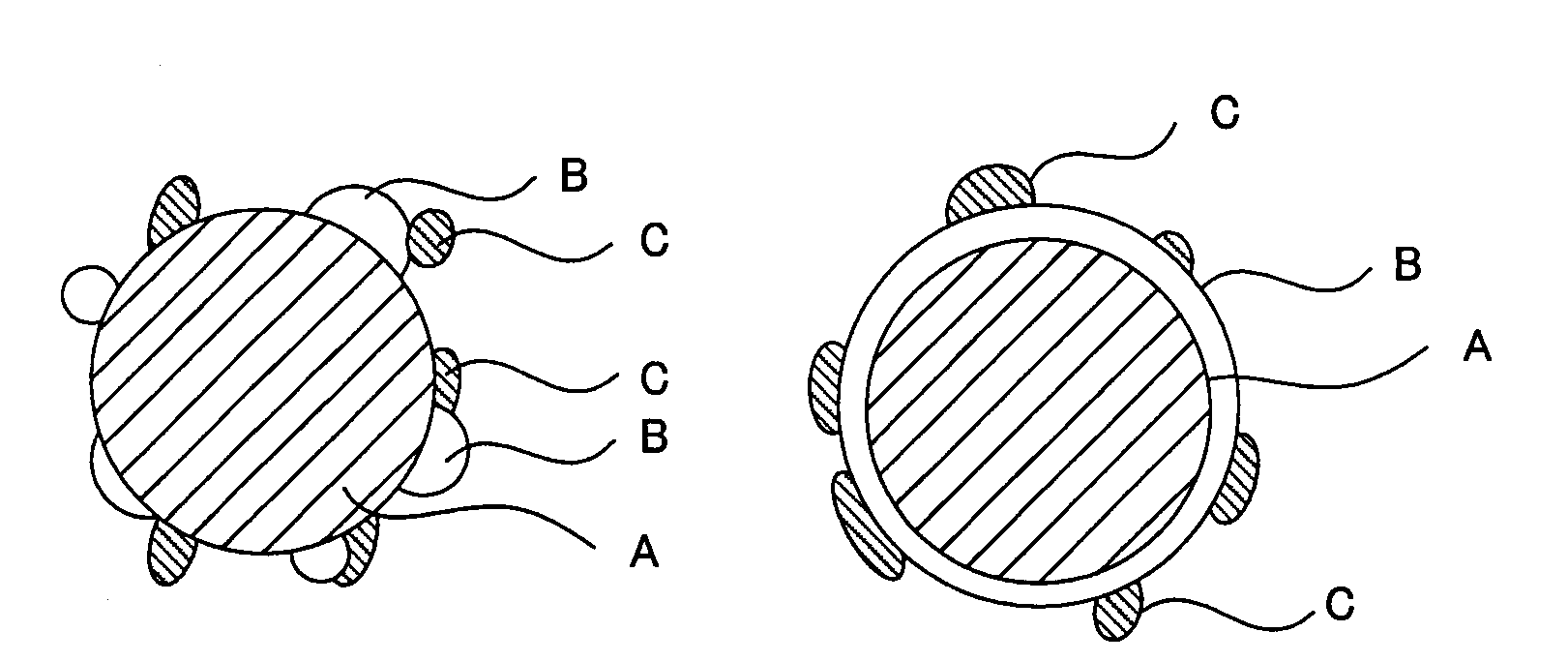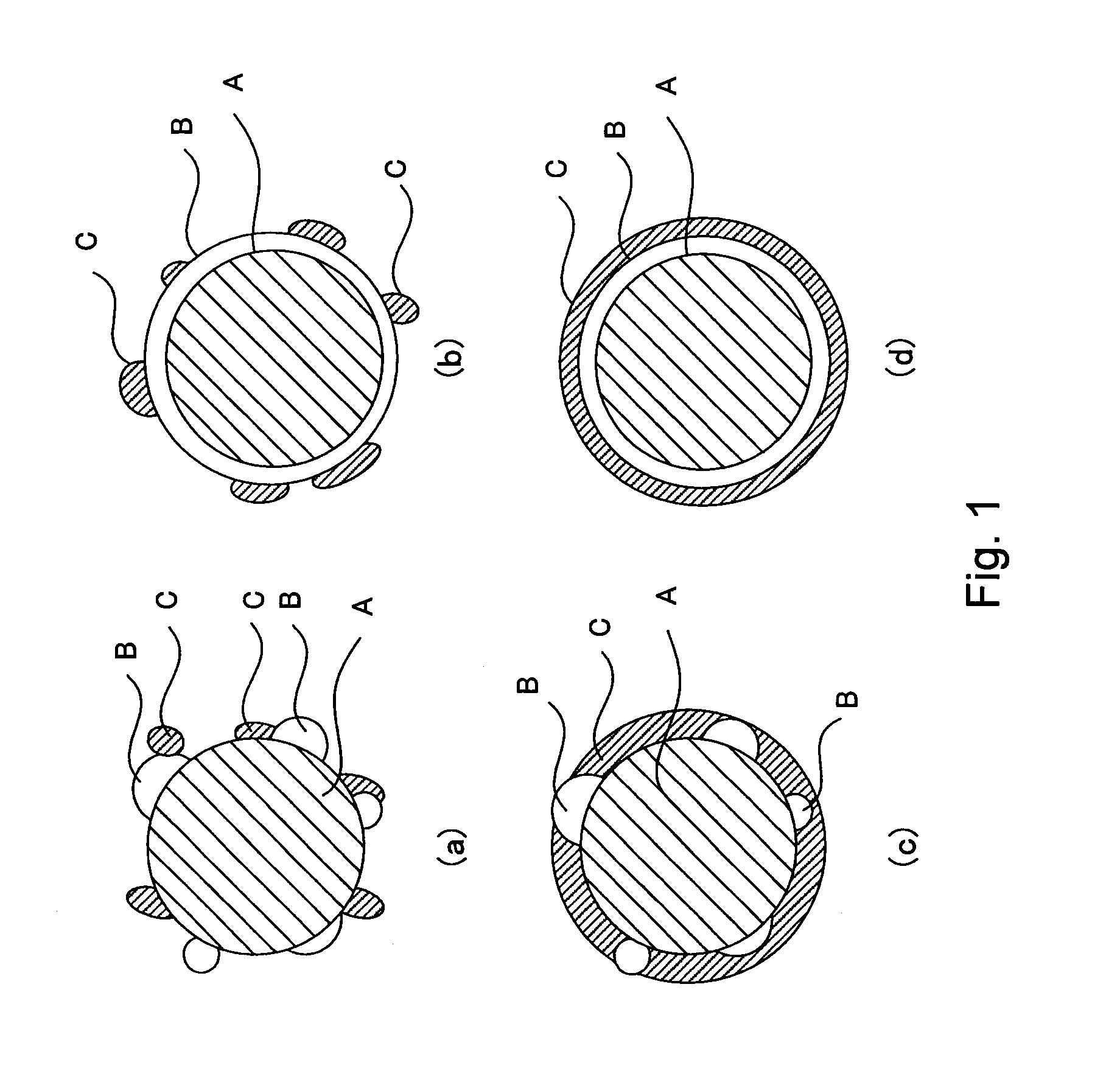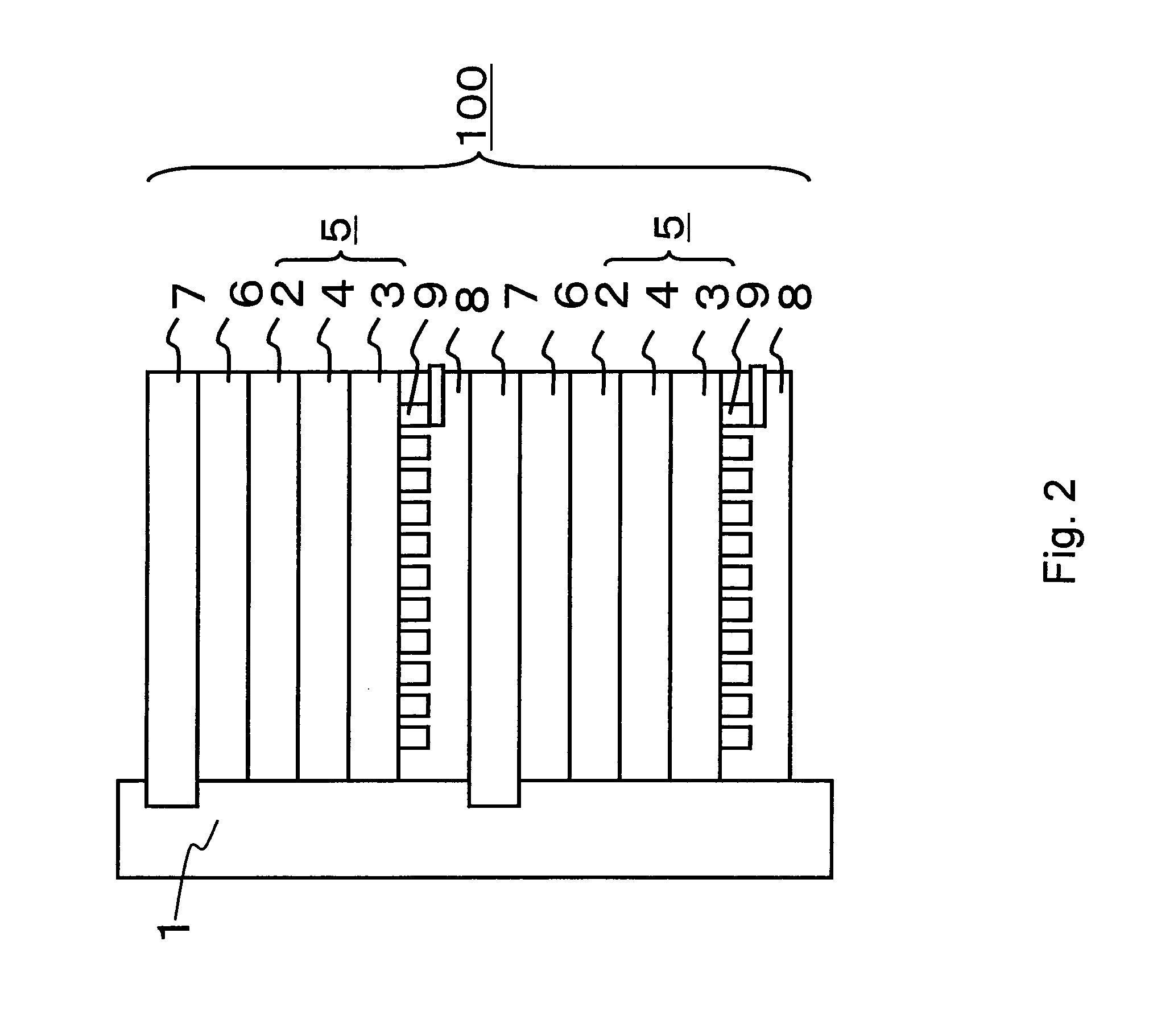Electrode for fuel cell, membrane electrode composite and fuel cell, and method for manufacturing them
- Summary
- Abstract
- Description
- Claims
- Application Information
AI Technical Summary
Benefits of technology
Problems solved by technology
Method used
Image
Examples
first embodiment
[0038]At the outset, an electrode for a fuel cell in a first embodiment of the present invention will be described.
[0039]The electrode for a fuel cell in this embodiment comprises a catalyst layer comprising a proton-conductive inorganic oxide with an oxidation-reduction catalyst supported thereon and an organic polymer binder. The catalyst layer mainly functions as a reaction field for an oxidation-reduction reaction of a fuel and an oxidizing agent in the electrode for a fuel cell. The catalyst layer also functions as a transfer layer for protons and electrons which are produced and consumed by the oxidation-reduction reaction.
[0040]The catalyst layer in this embodiment comprises a proton conductor having electron conductivity and an inorganic oxide. This inorganic oxide comprises[0041]a catalyst carrier comprising at least one material selected from the group consisting of tin(Sn)-doped In2O3, fluorine(F)-doped SnO2, and antimony(Sb)-doped SnO2,[0042]an oxide particle phase provi...
second embodiment
[0070]The second embodiment of the present invention relates to a membrane electrode composite comprising a fuel electrode, an oxidizer electrode, and an electrolyte membrane disposed between the fuel electrode and the oxidizer electrode. At least one of the fuel electrode and the oxidizer electrode comprises a catalyst layer, and the construction and effect of the catalyst layer is the same as those described above in connection with the first embodiment.
[0071]The electrolyte membrane is not particularly limited, and examples thereof include perfluorosulfonic acid-containing polymer electrolyte membranes, for example, Nafion (tradename, manufactured by Du Pont). Since, however, stable output can be provided even under elevated temperatures, a proton-conductive solid electrolyte membrane comprising an oxide superacid contained in an organic polymer may be selected.
[0072]The oxide superacid contained in the organic polymer comprises an oxide carrier H containing at least one element ...
third embodiment
[0098]The fuel cell in the third embodiment comprises the membrane electrode composite in the second embodiment.
[0099]The fuel cell in the third embodiment will be described with reference to the accompanying drawings. FIG. 2 is a typical cross-sectional view of a fuel cell in the third embodiment of the present invention.
[0100]A stack 100 of a liquid fuel cell shown in FIG. 2 is formed by stacking a plurality of unit cells on top of each other. A fuel introduction path 1 is disposed on the side face of the stack 100. A liquid fuel is supplied into the fuel introduction path 1 from a liquid fuel tank (not shown) through an introduction pipe (not shown). The liquid fuel preferably contains methanol. For example, an aqueous methanol solution or methanol can be used as the liquid fuel. Each unit cell comprises a membrane electrode composition (electrogenic part) 5 comprising a fuel electrode (also known as an anode) 2, an oxidizer electrode (also known as a cathode) 3, and an electroly...
PUM
 Login to View More
Login to View More Abstract
Description
Claims
Application Information
 Login to View More
Login to View More - R&D
- Intellectual Property
- Life Sciences
- Materials
- Tech Scout
- Unparalleled Data Quality
- Higher Quality Content
- 60% Fewer Hallucinations
Browse by: Latest US Patents, China's latest patents, Technical Efficacy Thesaurus, Application Domain, Technology Topic, Popular Technical Reports.
© 2025 PatSnap. All rights reserved.Legal|Privacy policy|Modern Slavery Act Transparency Statement|Sitemap|About US| Contact US: help@patsnap.com



